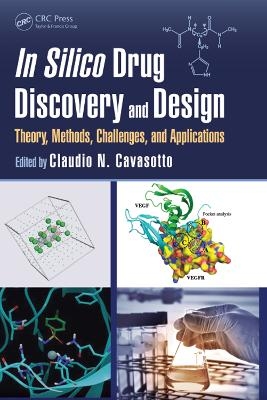
In Silico Drug Discovery and Design
Crc Press Inc (Verlag)
978-1-4822-1783-4 (ISBN)
In Silico Drug Discovery and Design: Theory, Methods, Challenges, and Applications provides a comprehensive, unified, and in-depth overview of the current methodological strategies in computer-aided drug discovery and design. Its main aims are to introduce the theoretical framework and algorithms, discuss the range of validity, strengths and limitations of each methodology, and present applications to real world problems in the drug discovery arena. Special emphasis has been given to the emerging and most pressing methodological challenges in in silico drug discovery and design.
The book assumes a basic knowledge of physical principles and molecular modeling. Particular attention has been paid to outline the underlying physico-chemical foundation of the methods described, thus providing the necessary background to avoid a "black-box" approach. In each self-contained chapter, this is presented together with the latest developments and applications, and the challenges that lie ahead.
Assembling a unique team of experts to weigh in on the most important issues influencing modern computational drug discovery and design, this book constitutes both a desktop reference to academic and industrial researchers in the field, and a textbook for students in the area of molecular modeling and drug discovery.
Comprised of 18 chapters and divided into three parts, this book:
Provides a comprehensive, unified, and in-depth overview of the current methodological strategies in computer-aided drug discovery and design
Outlines the underlying physico-chemical foundation of the methods described
Presents several applications of computational methods to real world problems in the drug design field
Helps to avoid a "black-box" approach to in silico drug discovery
Constitutes an actual textbook for students in the area of molecular modeling and drug discovery
Gives the reader the adequate background to face the current challenges of the field
In Silico Drug Discovery and Design: Theory, Methods, Challenges, and Applications
describes the theoretical framework, methods, practical applications and case examples relevant to computer-aided drug lead discovery and design. This text will surely aid in understanding the underlying physical foundation of computational tools and their range of application, thus facilitating the interpretation of simulation results.
Claudio N. Cavasotto earned his MSc and PhD in physics from the University of Buenos Aires. He conducted his postdoctoral training at The Scripps Research Institute after which in 2002 he moved to MolSoft LLC, La Jolla, California, as senior research scientist, where he remained until 2007. He then became assistant and associate professor at the School of Biomedical Informatics at the University of Texas Health Science Center at Houston. In 2012 he moved to the Biomedicine Research Institute of Buenos Aires-Partner Institute of the Max Planck Society, where he is head of Computational Chemistry and Drug Design. His research interests are primarily biomolecular simulation, computer-aided drug discovery and cheminformatics. His group develops and applies computational methods to study molecular interactions in biological systems, and to design molecules which modulate targets of pharmaceutical relevance.
The Physical Basis of Ligand Binding. Force-Field Representation of Biomolecular Systems. Library Design, Chemical Space, and Drug Likeness. Ligand-Based Drug Discovery and Design. Pharmacophore Modeling and Pharmacophore-Based Virtual Screening. Protein-Ligand Docking: From Basic Principles to Advanced Applications. Protein-Ligand Docking: Virtual Screening and Applications to Drug Discovery. Protein Structure Modeling in Drug Design. Implicit Solvation Methods in the Study of Ligand-Protein Interactions. Toward Complete Cellular Pocketomes and Predictive Polypharmacology. MM-GB/SA Rescoring of Docking Poses: Tricks of the Trade. Free Energy Calculations of Ligand-Protein Binding. Molecular Mechanics/Coarse-Grained Simulations as a Structural Prediction Tool for GPCRs/Ligand Complexes. Fragment-Based Methods in Drug Design. Role of Water Molecules and Hydration Properties in Modeling Ligand-Protein Interaction and Drug Design. How Protein Flexibility Can Influence Docking/Scoring Simulations. In Silico Approaches Assisting the Rational Design of Low Molecular Weight Protein-Protein Interaction Modulators. Incorporating Binding Kinetics in Drug Design.
| Zusatzinfo | 25 Tables, black and white; 26 Illustrations, color; 71 Illustrations, black and white |
|---|---|
| Verlagsort | Bosa Roca |
| Sprache | englisch |
| Maße | 156 x 234 mm |
| Gewicht | 907 g |
| Themenwelt | Medizin / Pharmazie ► Medizinische Fachgebiete ► Pharmakologie / Pharmakotherapie |
| Technik | |
| ISBN-10 | 1-4822-1783-X / 148221783X |
| ISBN-13 | 978-1-4822-1783-4 / 9781482217834 |
| Zustand | Neuware |
| Haben Sie eine Frage zum Produkt? |
aus dem Bereich


